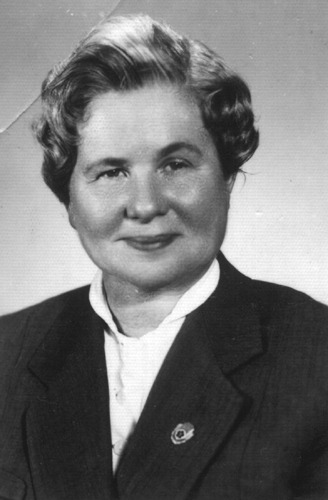“Tend[s] to initiate events, to be leaders rather than followers…be focused on specific goals…be courageous…resent authority” (sheknows.com). While these traits serve as the partial definition of the Polish name Jolanta, they simultaneously strive to encapsulate a Righteous Gentile’s persona. Thus, is it is fitting that Irena Sendler, who saved an estimated 3,000 Jewish children and adults, selected Jolanta as her code name to evade detection by the Nazis.
Born on February 15, 1910 in Otwok, Poland, Sendler grew up in a household bursting with compassion and respect for all human beings. Her father was a physician, and he continued to treat Jewish patients in the midst of escalating anti-Semitism. Later in life, Sendler would emulate this sympathetic mindset, yet in a way her parents could have never expected.
Irena worked as a Senior Administration for the Warsaw Social Welfare Department. When the Warsaw Ghetto was established, the list of contacts Irena accumulated from this profession was absolutely critical. Under the façade of a nurse, she secured a permit to enter the disease-infested ghetto.
Between 1942 and 1943, her tireless work of rescuing children ensued. The first step of rescue was often the hardest. Irena needed to convince parents that their beloved sons and daughters possessed a greater a chance of survival if they escaped the ghetto. Yet, parents were at an emotional crossroads, as Sendler could not guarantee the children’s safe departure from the Warsaw Ghetto.
Receiving permission to proceed with her mission, Sendler had to be creative. She often hid children in ambulances, body bags, potato sacks, and even buried beneath piles of goods. One common escape route was through a church adjacent to the ghetto: “They entered the church as Jews and exited as Christians” (Jewishvirtuallibrary.org).
It is estimated Irena saved 500 people prior to joining Zegota, which was a Polish resistance movement. Afterwards, Irena and her network of twenty-five selfless individuals smuggled 2,500 children out of the Warsaw Ghetto.
As a Righteous Gentile, Irena knew the risks she was taking; her every action was defying the laws of the Nazi regime, and could be punishable by death. Conversely, this unsettling reality never fazed Sendler. She was arrested on October 20, 1943, and endured brutal torture at the hands of the Gestapo. Even when the Gestapo broke her feet and legs, Sendler remained mute, refusing to reveal the names of her accomplices, contacts, or rescued children. Due to her silence, she was sentenced to death, narrowly escaping due to a Zegota member bribing a German.
Heralded as the female Oskar Schindler, it is unfathomable that Sendler’s legacy did not garner attention until late in her life. In 2000, four high school students wrote a play entitled Life in a Jar, which chronicles Sendler’s heroic efforts. The title alludes to the fact that Sendler recorded the names of each smuggled child on scraps of paper, which she hid in jars and buried in a neighbor’s garden. The play was highlighted on numerous media outlets, including NPR and CNN.
Sendler was nominated for a Nobel Peace Prize and received the Order of White Eagle, Poland’s high distinction. She passed away on May 12, 2008.
This is really interesting blog because it shows what some courageous individuals went through to put a stop to something they knew was wrong. I am surprised that I have never heard of this women because it seems that she was the equivalent of Schindler. I look forward to reading more about this blog!
I think that this blog perfectly blends your passions for Holocaust history and journalism. This was incredibly informative, while still conveying a deep sense of heartfelt emotion. It’s a blessing that we have the opportunity to learn about such magnificent people, even long after their actions have passed.